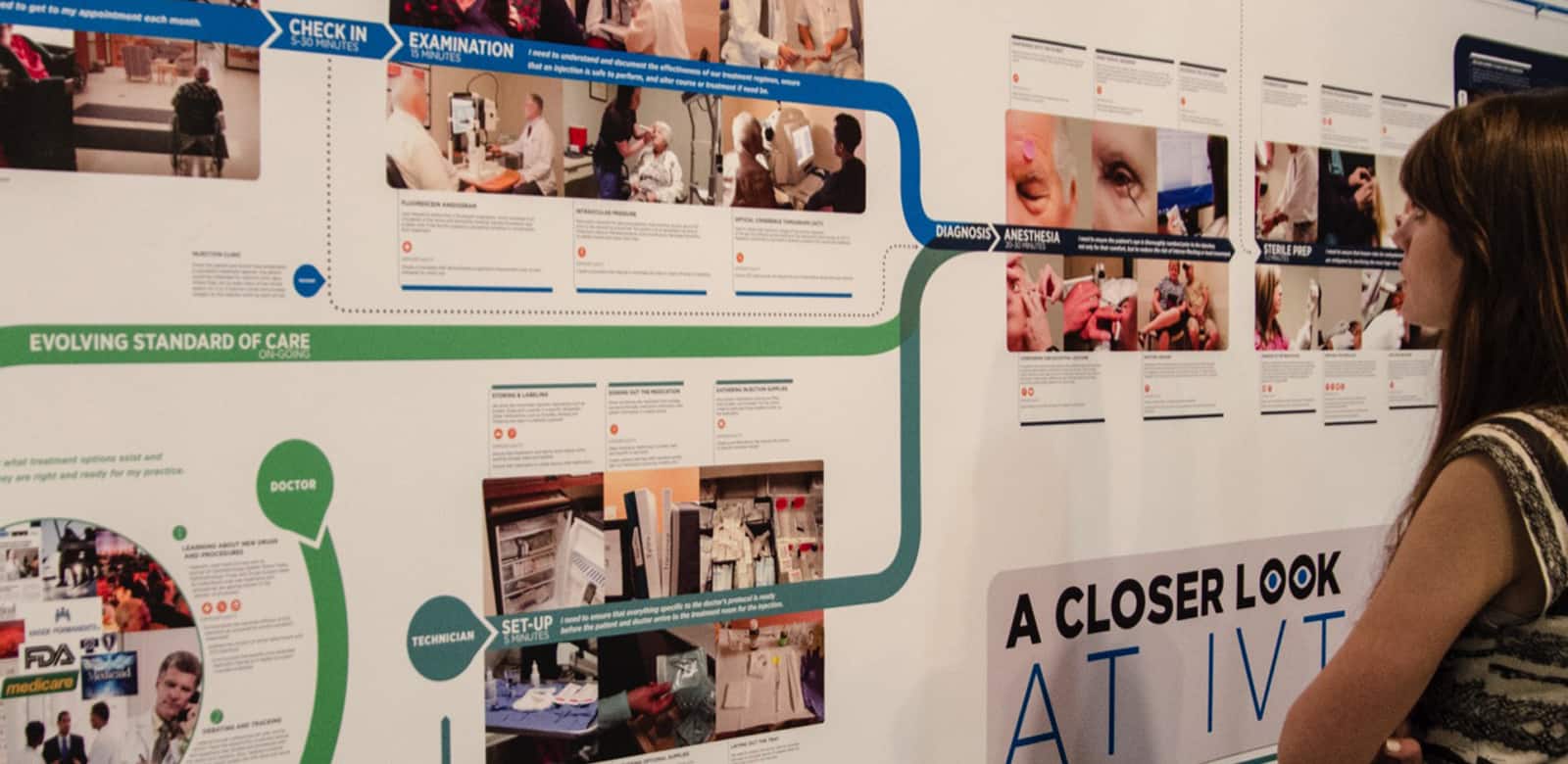The Top 10 Do’s and Don’ts for Disruptive Healthcare Innovation Strategy
Healthcare is turning to innovation strategy to address issues caused by increased governmental regulation, a complicated thicket of stakeholders, and a scarcity of resources. In the last five years, Innovation Centers across the U.S. sprouted up from Stanford Medical Center to the Mayo Clinic, but their results have been mixed. We talked to innovation leaders in fourteen healthcare systems to understand what works and what doesn’t work. The results may surprise you.
It’s certainly no secret that the healthcare industry in the United States is undergoing wrenching change. And with change, come challenges. For physicians and providers on the frontlines, the shift to a value-based method of care (versus the traditional volume-based, fee-for-service system) means many healthcare systems are faced with finding ways to improve patient care and while simultaneously cutting operational costs. A difficult challenge indeed.
Healthcare executives realize they must develop new methods, new devices, and new approaches to address evolving physician and patient needs or be left behind. Consequently, some hospitals and other front-running healthcare entities like The Cleveland Clinic, Johns Hopkins and WellStar and created dedicated, internal healthcare innovation centers; organizations entirely devoted to coming up with new ways to improve healthcare.
But despite this newfound investment in innovation, we have seen healthcare organizations struggle to implement transformative innovation. From our research as well as our deep healthcare experience, we’ve put together a list of Ten Do’s and Don’ts to accelerate innovation projects, ensure rapid adoption, and reduce risk.
Here’s what you need to know:
1. Do Use A Proven Step-By-Step Methodology
It may seem obvious: Defining and using a proven step-by-step method is critical to successful innovation adoption. But the greatest value of using such a method has less to do with developing a solution and much more to do with gaining organizational alignment and executive endorsement. Healthcare is characterized by a complex labyrinth of stakeholders as explained in the book, Innovation: The Cleveland Clinic Way. There needs to be a simple, yet flexible framework for discussion with everyone in the organization, so they understand the problem, the proposed solution and the benefits that will accrue. A one-page visual map is the most useful tool you have in your arsenal to effect organizational change and make change stick.
The takeaway: Use a proven innovation method that explains what’s broken, what’s needed, and what success looks like to gain organizational buy-in.
2. Don’t Jump Straight To Brainstorming
Around two-thirds of healthcare organizations (64%) reported that they jumped straight to developing solutions before taking enough time to understand the real problem—usually because a physician or executive already knew “the answer.” But in retrospect, healthcare organizations learned that unless they deeply understood direct and latent needs—from a clinical, operational and patient perspective—they were only solving superficial problems. Fully identifying and understanding a problem in-depth requires empathetic study of behavior in specific situations, e.g., shadowing nurses or observing surgeons at work. Only this type of detailed investigation gets to the common core of a problem, uncovers true needs, and forces consideration of each stakeholder from staff to technician to physician.
The takeaway: Don’t be too quick to develop a solution without first using immersive methods to uncover the exact needs of all stakeholders because a well-defined problem is half the innovation battle.
3. Don’t Waste Resources On Challenges Or Hackathons
About a third of Healthcare Innovation Leaders (36%) sponsored challenges or “hackathons” to encourage participation in their organizations in the hopes of finding one or two big ideas out of the dozens that might be generated. The problem with these initiatives was that they were time restricted, often to a few hours, and they were staged as competitions where participants limited their thinking to develop the “winning” answer participants believed executive judges wanted to hear. Only one of the ideas from these events led to any investment ($5k) which led to disappointment among participants, organizers, and executives alike. Some Innovation Leaders believed these events actually hurt their credibility with executive management because the events did not generate comprehensive solutions with clear directions for further development.
The takeaway: Contests and challenges are popular, yes, but transformative innovation comes from complex problem solving, not spontaneous ideation.
4. Do Build Iterative Prototypes
Healthcare Innovation Center leaders unanimously agreed the most valuable step in the innovation process was iterative prototyping. Leaders cited three core benefits of iterative prototyping: attention to detail, executive feedback, continuous learning. These benefits are captured in the popular book Lean Startup. Nonetheless, our Innovation Center leaders were surprised by how different their final solutions were from their initial prototypes. These leaders didn’t know that academic research has consistently found it takes three significantly different versions of your original idea before you create a breakthrough solution. This means innovation teams must nurture, protect and evolve their ideas before their solutions will be able to stand on their own. This is a radically different mindset that can be a challenge for risk-averse healthcare organizations to adopt.
The takeaway: When it comes to prototyping, the first is the worst. Don’t stop the process—learn what’s wrong and continue building to overcome objections.
5. Don’t Ignore Creating Compelling Value Propositions
One of the biggest mistakes Healthcare Innovation Centers consistently made was failing to create a compelling Value Proposition. Usually, these innovation teams focused solely on cost savings or hypothetical business outcomes and neglected to create an emotional story to inspire stakeholders. Leaders cited numerous examples where they were presenting their innovation solutions and received stone-cold reactions to their ideas. In debriefing their failures, they recognized how important it is to explain: Why should we change? How might we change? What are the benefits of change? Change requires inspiration, motivation, and aspiration. A rational cost/benefit explanation will not, and cannot, provide a compelling reason to change entrenched behaviors.
The takeaway: Create emotional stories supported with a strong rationale, and compelling reasons to believe.
6. Don’t Expect Overnight Adoption
Seventy-one percent (71%) of healthcare innovation projects we studied were supposed to create system-wide change in 9-12 months. Innovation Teams assumed “if we build it, they will come.” Unfortunately, this rarely proved to be true. Innovation Leaders reported that after they turned their innovations over to their training department and moved on to their next innovation project, their innovations quickly faltered. Leaders did not realize the importance of starting small, building a track record of success, and creating a narrative to overcome the human resistance to change. People don’t like change…even when it’s beneficial. In our experience, adoption is driven by a small group of early users with enthusiasm to champion the solution, followed by a large group who wants to keep up, followed by the vast majority of other users.
The takeaway: Healthcare innovation adoption takes time, and innovation teams need to stay engaged until a critical mass of people adopts their innovation.
7. Do Seek Experienced Partners
Innovation Leaders, particularly U.C. Berkeley and Emory and Georgia Tech Healthcare Innovation Program, looked outside their organizations for help to launch, establish, and implement their innovations. These organizations found their staff to be very bright operationally skilled people, but these people rarely had a well-developed innovator skillset. These organizations recommended searching for partners who know how to develop breakthrough solutions and implement them without disrupting the existing operations. This is critical in healthcare systems that operate 24/7/365. These organizations also recommended working with specialists like IT developers or performance improvement engineers who understand the legacy systems of the healthcare organization to ensure innovative ideas can be executed.
The takeaway: Work with experienced partners and specialists who have launched innovations in complex ecosystems and understand how to accelerate adoption and troubleshoot in real-time.
8. Don’t Engage Advisory Boards Too Early
Over half (54%) of Healthcare Innovation Centers we interviewed created and engaged Advisory Boards consisting of internal leaders, physicians, industry experts and potential donors to review and define project proposals, then provide ongoing guidance and feedback throughout the innovation process. These Advisory Boards required a lot of time and energy from our Innovation Leaders but provided very little in return. In fact, one Innovation Leader complained they were “more trouble than they were worth.” This same individual suggested the better approach would be to create a couple of prototypes to demonstrate progress before seeking outside counsel or funding because it’s easier to get support with proven results. This is particularly true in healthcare where physicians and executives are accustomed to reviewing clinical trial data before rolling out a new drug, device, or procedure.
The takeaway: Start small, create quick wins, and build your case with data before creating an Advisory Board to help you scale your innovation.
9. Do Invest Like A Venture Capitalist
About a quarter (23%) of healthcare organizations we interviewed adhered to a “no money, no mission” mantra and focused on getting funding from the onset. Other Healthcare Innovation Leaders reported difficulty creating business cases for innovation projects in their early stages because their teams didn’t even know what needed to be funded. Based on our experience, most successful organizations invest like Venture Capitalists. These organizations provide a small amount of funding to conduct Discovery Research to deeply understand the problem. Then, a second slightly larger round of funding is requested for ideation and prototyping solutions. Finally, a third more substantial round of funding is requested to test solutions in the market. This portfolio approach encourages innovation teams to spend energy on doing rather than planning and learning rather than meeting because the team needs to get their “next round” of investment.
The takeaway: Create time-constraints to inspire people to build what’s needed, not what’s possible.
10. Do Get & Keep Executives Involved
In any industry, healthcare included, 90 percent of innovation projects fail after the 91st day of life according to research published in the Harvard Business Review. The primary reasons for failure were a lack of buy-in from key stakeholders and no executive support. Our interviews revealed a similar dynamic. The Mayo Clinic developed a strategy of holding an executive briefing for one hour every two weeks. Their healthcare innovation teams were tasked with creating something tangible for executives to review and provide feedback on each meeting. Bringing something tangible meant creating physical models that can be written on, edited, moved around, not simply creating yet another slide presentation. These models were used to solicit much-needed feedback, reinforced organizational alignment and inoculated against organizational rejection.
The takeaway: Move quickly and methodically in two-week increments with executives to maintain buy-in every step of the way.
“Learn from the mistakes of others. You’ll never live long enough to make them all yourself.” – Ralph Waldo Emerson
As healthcare organizations invest more time and effort in innovation, it’s important to build on the lessons learned from pioneering Healthcare Innovation Centers. There’s no need to reinvent the wheel here. Innovation is hard. But it doesn’t need to be. Take a look at these best practices and see how they align with your innovation approach. You just might find you’ll be able to accelerate your innovation adoption while reducing risk if you simply avoid the mistakes of others.














